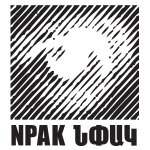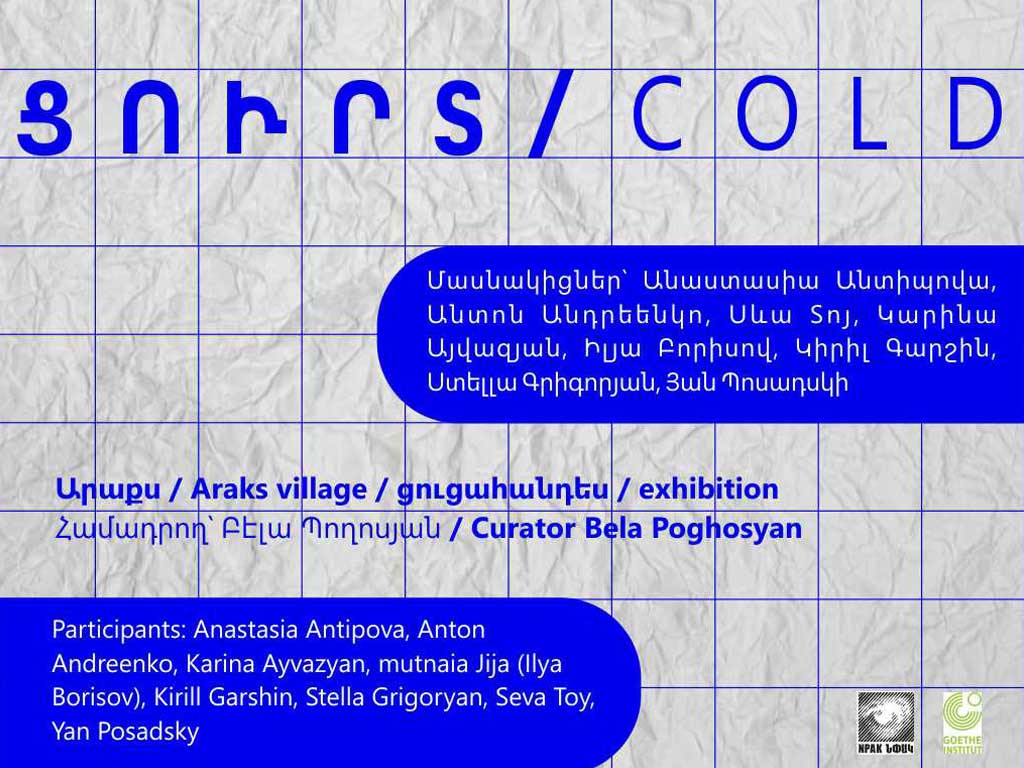‘COLD’ ARAKS village
final exhibition of NPAK’s residency
Throughout December, the artists lived in residence organized by NPAK (Armenian Center for Contemporary Experimental Art): they worked together, shared common spaces, cooked food and worked on their individual projects.
As a curator, it was important for me to work with artists in the format of discussions, personal dialogues and discussion of art projects. However, the format of the residences also assumed my living in them, which formed the wrong communication, where we were still equally concentrated on routine issues. Consequently, the work with the artists, which was supposed to be in the frame of the project, did not happen. However, I should mention that a different communication was formed, which made it possible to more accurately analyze the format of the residence and interactions within it, meaning, I got to a conclusion on the format as a whole for further work.
As a result, we realized that the process always forms concrete bonds between the participants in this impromptu community. This process has shaped the spontaneous discussions between residents, locals and the local context.
The residence is located in the village of Araks, in an ordinary house that does not aspire to be like a standard residence with white walls and minimalist equipment. In fact, this is a place where you can become part of the closed Araks community for a while and have a new experience. There is no artistic community in the area, as well as the usual urban amenities and opportunities. The residence was opened in winter, in December, which confronted the reality of resident guests who were not familiar with the real winter conditions in Armenia, which had become a habit for locals. In Araks, it seems like time stops: there is nothing but communication between people, routine and tasks that arise in the moment. Whether the integration of art institutions into such closed communities is necessary or productive for both sides is an open question. However, the first experience of residence opened many questions for us, starting from the topic of communication, the local context and interaction with it, and to the format of residences / assistance / mutual assistance / initiatives and other phenomena that are undergoing a renewal process around the world.
Among artists, it is customary to rely on informal relationships and horizontal connections in order not to show unnecessary power, not to create additional distance. However, it is impossible to avoid the distribution of responsibilities, as well as the rethinking of different contexts (between Russian artists and Armenian ones).
“Symbiosis” is impossible, so the only way out is to understand the “other”, as in the case of any interaction between people. The conscious template of one’s own “truth” does not make it possible to understand the “other” and leads to a mode of incomprehension. The “other” at the same time does not come out of their conscious “truth” so as not to lose their template. The most important thing in this process for everyone is to keep a safe space.
Hence, in horizontal communication, emotional cold sets in, which creates an imaginary horizontal position with a request for warmth. A safe distance is created, as in vertical relationships, but under the guise of another, more approved among the people.
A circle is a figure that loops in itself with everything inside. However, even within a circle it is possible to divide into different groups or become an autonomy if the subgroups do not share your interests or do not correspond to your ideas. The result of such a scheme of relationships can be an imaginary cold world, which, like a chameleon, is painted under generally accepted horizontal norms.
Araks, by its location, initially creates a certain context: a village on the border with Turkey, where you can see one of the most famous symbols of Armenia, Ararat. During the residence period, the mountains were completely invisible due to the fog.
Can it be argued that people, like Ararat, can unconsciously or consciously create an emotional fog in horizontal relationships and hide behind it, thereby creating a safe ground for themselves and for maintaining generally accepted principles. For a while, “leave” and come out of the fog when they feel safe to manifest.
Residences are still a floating format, which is divided into different types. Each artist comes with certain requests and expectations, the organizers, for their part, also have their own requests and expectations. The question is in the process, which is formed by different people, and which thereby turns into a spontaneous process, since no one knows the reaction of the “other” to his “other”. But the only point that can become a starting point in the dialogue is not the works in the exhibition, not the division of common labor and space, but the acceptance of the “other”, as “other”..
Emotional coldness comes with the desire to maintain a personal safe space, since the acceptance of the “other” implies total acceptance, which in turn implies an honest look at oneself through the “other” as well.
Residences of this format reveal the vulnerable parts of the personality and thus highlight the fragile places for working out in society as a whole.
The residence was located in a border village, where their own rules of life and attitude were formed. In this case, the artists who were called upon to enter into a dialogue with the local context, on the one hand, had to make their “word”, but were more in a state of fading and cooling in order to understand the context in a safe position for themselves, as when communicating with locals and village and within the group.
Bela Poghosyan
Participants:
Anton Andrienko
Anastasia Antipova
Stella Grigoryan
Yan Posadskiy
Kirill Garshin
Seva Toy
Karina Ayvazyan
Ilya Borisov
Curator:
Bela Poghosyan
NPAK, 2023


























